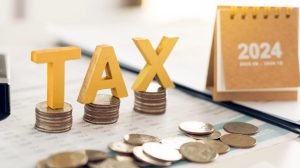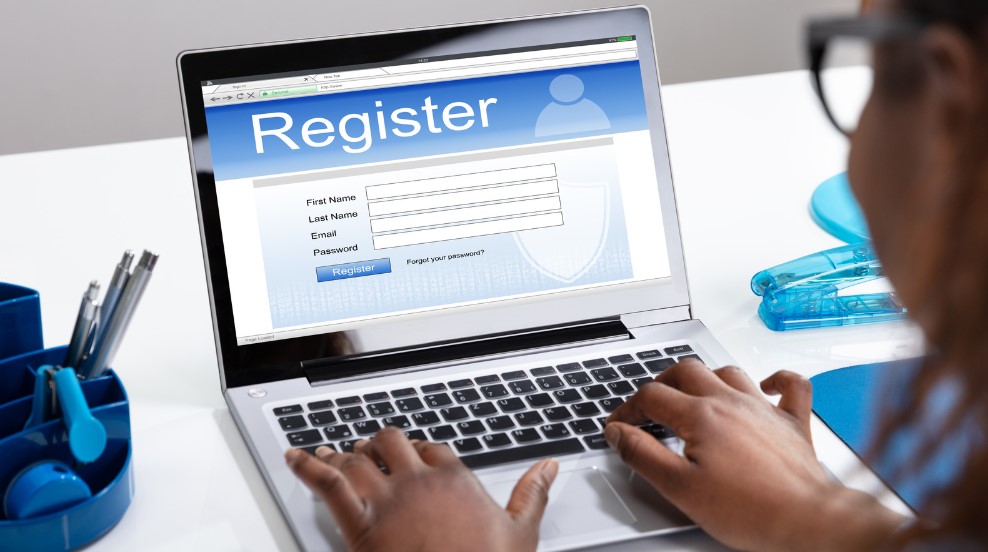Becoming self-employed in the UK is an exciting step toward controlling your career and financial future. Whether you’re starting a small business, freelancing, or setting up as a sole trader, registering with HMRC (Her Majesty’s Revenue and Customs) is essential.
But what steps are involved, and how can you streamline the process? This guide walks you through everything you need to know about registering as self-employed in the UK, from eligibility requirements to key tips for a smoother experience.
By following these steps described in this article, you’ll be on your way to launching your self-employed journey with confidence.
What Does It Mean to Be Self-Employed in the UK?

Being self-employed in the UK simply means you work for yourself and aren’t employed by someone else. You run your own business, provide goods or services, and take financial responsibility for your work.
Unlike traditional employees, self-employed individuals do not have the same legal protections, such as minimum wage or holiday pay. However, they have the freedom to choose their working hours, clients, and projects.
Self-employed individuals can operate as sole traders and freelancers or even set up their own limited companies. A common misconception is that self-employed and sole traders are the same, but not all self-employed individuals are sole traders; some may be company directors or partners in a business.
When you decide to work for yourself, it’s essential to understand the tax obligations and the registration process, especially with HMRC, to avoid any legal or financial penalties. Now, let’s explore how to start the registration process.
How to Register as Self Employed with HMRC?
Registering as self-employed with HMRC is a legal requirement in the UK. You must notify HMRC that you’re self-employed so they can set you up for paying income tax through self-assessment and National Insurance contributions.
The process of registration is straightforward and can be completed online. Here’s a step-by-step guide to help you get started:
- Create a Government Gateway Account: The first thing you need is a Government Gateway account. Visit the HMRC website and follow the instructions to set this up.
- Register for Self-Assessment: Once you have the account, log in and register for self-assessment. During this process, you will provide details about your business, including your name, address, and the nature of your self-employment activities.
- Get Your UTR Number: Upon registration, HMRC will issue you a Unique Taxpayer Reference (UTR) number, which you’ll need for future correspondence and tax returns.
- Set Up National Insurance Payments: As part of the registration, you will also need to arrange your National Insurance contributions (NICs). Most self-employed individuals pay Class 2 NICs unless their profits are below the small profits threshold, in which case they can request to be exempt.
What Information Do I Need to Register as Self-Employed?

When registering as self-employed with HMRC, having all the necessary information at hand will make the process quicker and more straightforward.
Here’s what you’ll need:
- National Insurance Number: This is a must, as it’s how HMRC links your earnings to your identity.
- Personal and Business Details: HMRC will require basic details like your name, date of birth, and address. You will also need to describe the nature of your self-employed work.
- Government Gateway Account: As mentioned earlier, you need to create this account to access HMRC’s online services.
- Start Date: You’ll need to provide the date when you began working for yourself. This date is important for determining when you need to start paying taxes.
- Bank Details: If you’re going to pay your tax and National Insurance contributions through Direct Debit, you’ll also need your bank account details.
Once you have gathered all this information, the registration process typically takes 5-10 minutes.
When Should I Register as Self-Employed?
It’s crucial to know when to register as self-employed to avoid any fines or penalties. You must notify HMRC by October 5th of your second tax year. For example, if you started working for yourself in May 2024, you must register by October 5th, 2025.
It’s advisable to register as soon as you start earning money through self-employment to avoid missing deadlines. Failing to do so can result in penalties and additional interest charges.
Keep in mind that even if you don’t have clients or a significant income right away, you’re still required to register with HMRC once you consider yourself self-employed.
How Do I Get a UTR (Unique Taxpayer Reference) Number?

The Unique Taxpayer Reference (UTR) is a 10-digit code that HMRC assigns to you when you register for Self Assessment. It’s essential for filing tax returns and communicating with HMRC about your self-employment income.
Here’s how to get your UTR number:
- Register for Self-Assessment: After you’ve completed your registration for self-employment through the Government Gateway, HMRC will automatically generate a UTR number for you.
- Receive by Post: HMRC will send your UTR to your registered address by post. This usually arrives within 10 days (or up to 21 days if you’re abroad).
- Keep It Safe: Your UTR is crucial for managing your self-employed taxes, so keep it somewhere safe. You’ll need it to file tax returns, make payments, and deal with any tax-related inquiries.
If you lose your UTR, you can retrieve it by logging into your Government Gateway account or contacting HMRC directly.
Do I Need to Pay National Insurance When Self-Employed?
Yes, as a self-employed individual, you must pay National Insurance contributions (NICs). There are two classes of National Insurance relevant for self-employed workers:
- Class 2 National Insurance: This is paid by all self-employed individuals who earn profits over the “Small Profits Threshold” (£12,570 in the 2023/24 tax year). It’s a flat rate of £3.15 per week.
- Class 4 National Insurance: This applies to those with profits above £9,568 (2023/24). The rate is 9% on earnings between £12,570 and £50,270, and 2% on profits above £50,270.
Both types of National Insurance are calculated when you submit your annual Self Assessment tax return. The contributions go towards your entitlement to the State Pension and other benefits.
If you earn less than the threshold, you may not have to pay Class 2 NICs, but it’s still worth considering making voluntary payments to protect your State Pension.
How Do I File a Self-Assessment Tax Return?

Once you’re registered as self-employed, you must submit an annual Self Assessment tax return to HMRC. Here’s how to file it:
- Log into HMRC: Use your Government Gateway ID and password to log in to HMRC’s online services.
- Complete the Return: You’ll need to provide details about your income and expenses for the tax year. You can claim allowable business expenses, such as travel, office supplies, and professional services.
- Submit the Return: Once you’ve completed the form, submit it by the 31st of January following the end of the tax year (which runs from 6 April to 5 April). You must also pay any tax due by this date.
- Keep Records: Ensure you keep all relevant documents, such as receipts and invoices, for at least five years, in case HMRC decides to investigate your return.
Failing to submit your tax return on time can result in penalties, even if you don’t owe any tax. For example, if you miss the deadline, you’ll face a £100 fine, and further penalties may apply the longer the delay.
Can I Register for VAT as a Self-Employed Person?
As a self-employed person, you may need to register for Value Added Tax (VAT), depending on your earnings. Here’s what you need to know:
- Mandatory VAT Registration: If your business’s taxable turnover exceeds £85,000 within a 12-month period, you must register for VAT with HMRC. Once registered, you’ll need to charge VAT on your goods and services and submit regular VAT returns.
- Voluntary VAT Registration: Even if your turnover is below £85,000, you can choose to register voluntarily. This may be beneficial if you work with VAT-registered clients, as it allows you to reclaim VAT on business expenses.
The VAT registration process can be completed online, similar to your self-employed registration. After registration, you’ll receive a VAT registration certificate, which includes your VAT number and details about your VAT responsibilities.
What Happens After Registering as Self-Employed?

Once you’ve successfully registered as self-employed with HMRC, here’s what to expect:
- Ongoing Tax Responsibilities: Each year, you’ll need to file a Self Assessment tax return by 31 January. You must report your earnings and pay any income tax and National Insurance contributions due.
- Keep Business Records: HMRC requires that you keep records of your income and expenses. You don’t need to send these when filing your return, but you should keep them for at least five years in case HMRC audits you.
- Set Aside Money for Taxes: Since no one is withholding tax from your income like in traditional employment, you’ll need to manage your cash flow carefully. Set aside a portion of your earnings each month to cover your tax bill.
- Make Payments on Account: In addition to your yearly tax bill, HMRC may require you to make payments on account for the following year’s tax, which helps spread the cost of your tax liabilities.
Conclusion
Registering as self-employed in the UK might seem like a daunting task, but once you break it down into manageable steps, the process becomes straightforward.
From setting up a Government Gateway account and getting your UTR number to understanding tax obligations and National Insurance contributions, each step is essential to ensure you’re fully compliant with HMRC.
By staying organized and keeping up with your tax responsibilities, you’ll avoid penalties and have peace of mind to focus on growing your business.
Remember, being self-employed not only provides flexibility and independence but also comes with specific financial responsibilities. The key is to stay informed and proactive, ensuring that you’re meeting deadlines and maintaining accurate records.
Whether you’re just starting your self-employment journey or need a refresher on your obligations, this guide has covered everything you need to know about registering as self-employed in the UK.
FAQs
What is the difference between being a sole trader and being self-employed?
While often used interchangeably, being self-employed refers to anyone who works for themselves, while a sole trader is a specific business structure under which a self-employed person can operate. Not all self-employed individuals are sole traders; some might operate limited companies or partnerships.
What are the tax responsibilities for self-employed individuals in the UK?
Self-employed individuals must complete a Self Assessment tax return each year, declaring their earnings, allowable expenses, and profits. Based on this, they will pay income tax and National Insurance contributions. VAT may also apply if turnover exceeds £85,000.
How do I keep records of my income and expenses as a self-employed person?
Keeping detailed and organised records is essential. You should record all business income and allowable expenses, keep receipts, and regularly update financial records. There are many software options available to help streamline this process.
Can I be both employed and self-employed at the same time?
Yes, it’s possible to be both employed and self-employed. In this case, you must still register as self-employed with HMRC and submit a Self Assessment tax return for your self-employed income, while your employed income will be taxed through PAYE.
Do I need a business bank account if I am self-employed?
While not mandatory for sole traders, having a business bank account is recommended. It helps to keep your personal and business finances separate, making it easier to manage cash flow and track expenses for tax purposes.
What are the penalties for late registration as self-employed?
If you fail to register as self-employed by the October 5th deadline in your second tax year, HMRC may impose penalties. These fines can vary depending on how late you register and may also include interest on unpaid taxes.
How do I register for Class 2 National Insurance as a self-employed worker?
You don’t need to register separately for Class 2 NICs. When you file your Self Assessment tax return, HMRC calculates your National Insurance contributions based on your profits and includes Class 2 NICs automatically if applicable.

